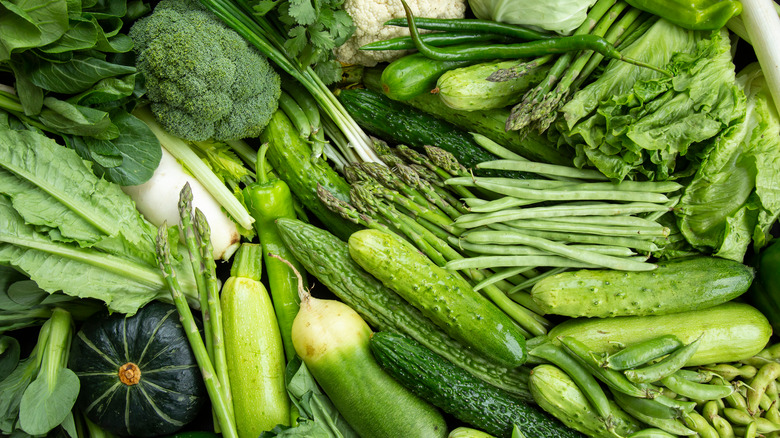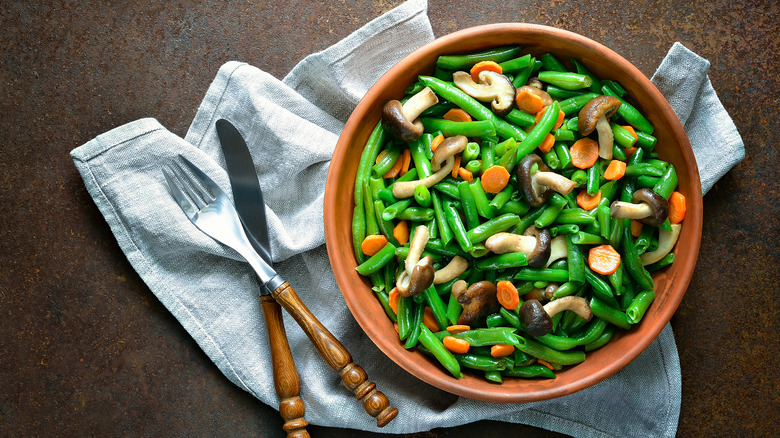The Trick To Maintaining Color In Your Cooked Vegetables
The produce is fresh, vibrant, and bursting with color, and you're excited to prepare something that's as dazzling as it is delicious. Problem is, one false move and instead of serving vegetables with intense color, you serve a dish that's irrefutably lackluster.
Not to worry, a few simple culinary tricks will keep your greens green, and the rest of your brightly colored vegetables from losing their hue as they cook to perfection. When cooking green vegetables like broccoli, green beans, and asparagus in salted boiling water, Eatwell101 suggests you halt cooking after a few minutes (as soon as the vegetables reach al dente), and transfer the veggies to an ice water bath. The cold water prevents further cooking and locks in color. Goodfood adds that the high heat from the boiling water neutralizes the enzymes in the vegetables that can destroy their inherent beauty; as long as you don't overcook them.
Why add salt to the boiling water? Salt not only seasons the water and flavors your vegetables, but it also minimizes nutrient loss. Plain water leaches salts and other water-soluble nutrients from your veggies as they cook.
A pinch of baking soda might work too. This turns the water slightly alkaline (versus acidic) which preserves chlorophyll, the compound in vegetables responsible for their bright green color. In acidic environments, chlorophyll breaks down and vegetables turn into an unsavory, pallid version of their fresh cousins.
Watch the clock, grab two pantry staples, and don't be shy with the water
The Kitchn asserts that it's not just boiling water that draws color from vegetables, even the heat from a stove-top sauté can turn vibrant greens into grayish yellows. The site recommends quick-cooking, and in addition to the baking soda hack, they suggest using copper cookware (if you have it) because copper slows down the chemical reaction that mutes your greens.
Copper works because free copper and zinc ions in the cookware prevent chlorophyll atoms from breaking down, despite the fact that they're exposed to heat. In fact, folks once added copper pennies to their veggie water to keep colors intact, per The Free Library. The site adds that using "lots of boiling water" will help because heat will be distributed faster, and vegetables will cook more quickly (so they'll spend less time in the pot).
The Chicago Tribune agrees and adds that you can minimize color changes and color loss by immersing vegetables in enough boiling water to cover them and suggests leaving the lid off for the first few minutes of cooking to allow the volatile acids that mute chlorophyll to vaporize and/or dissolve in the water.
If you've got the time, patience, and hankering for sublimely green vegetables, you should cook green beans, broccoli, asparagus, and sugar snap peas in three stages: blanch first, then shock in ice water, then sauté. This three-step process guarantees bright green vegetables every time.

